by aramatzne@gmail.com | 26 Sep 2017 | Roads Taken
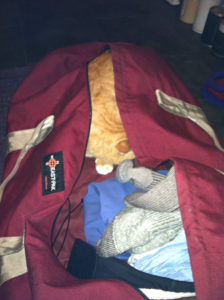
An ounce of prevention, Big Cat requests that I stay.
The trail was on the east-facing slope, in mid-afternoon, it was entirely shaded. Autumn settled in last week making the shady slope cool and damp but we were in pursuit of a sunny nap clearing.
The trail came to an extravagant but rather permeable fence, then turned and followed the fenceline. One large, mangled, weathered, and high-off-the-ground sign stated, “No trespassing. No hunting. No…”
We followed the trail until it veered away from the fence. Then we crossed the fence, climbed the hill, and found the most lovely picnic spot, complete with a stone fireplace and a picnic table. We also found a perfect, sunny, pine needle-laden opening for a nap.
Enjoying the sun and watching as dozens of turkey vultures wobbled their way south overhead, we heard an engine, grinding up the hill.
“I suppose you know you’re on private property.”
“Yes, we saw the sign.” I mean, really what else could we say? The fence should have been enough.
After a pleasant exchange about where to find an equally beautiful and sunny nap spot on public land, we bid adieu and made our way back to the trail.
It was only later that I coined a new word: tresnapping. We meant no harm, we caused no damage, we merely wanted to nap in the sun, trespassing was necessary to fulfill our goal. Tresnapping. It’s perfect. You read it here first.
I took this photo of Big Cat napping in my duffel bag. I was packing for a work trip. He was tresnapping in silent protest.
Like this:
Like Loading...
by aramatzne@gmail.com | 25 Sep 2017 | Musing
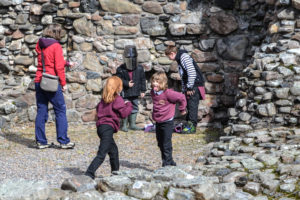
While children play, the Knight in Wellies stands watch.
There’s one in every class. You know the kid, the one who is always just on the fringe. Not quite fully accepted- and sometimes not fully interested in being accepted.
They keep to themselves. They have their own drummer. While other kids stick out their tongues and jostle each other, they stand guard in their knight’s helmet and Wellies.
I took this photo in Scotland’s Balvenie Castle adjacent to the Balvenie distillery. This is something one may imagine they have seen after a dram or two of good single malt whisky, but I was stone cold sober. And I did not attempt to fit in by donning a lampshade.
Like this:
Like Loading...
by aramatzne@gmail.com | 24 Sep 2017 | Roads Taken

A haiku.
I drink coffee for the cream. Decaf is just fine. Ask anyone, I don’t need the caffeine.
I took this photo in Bozeman, Montana. Kudos to ZCH for remembering the syllables.
Like this:
Like Loading...
by aramatzne@gmail.com | 23 Sep 2017 | Musing

Morning clarity in the rearview mirror.
The rain moved ahead of me. It passed through town and across the plateau before following the river west. The same route I was taking.
Summer rain in the sagebrush desert is something worth celebrating. It washes the dust out of the air. As the air warms again almost immediately, it smells of earth and water and life.
It is unmistakable. It breaks through the dust in my brain to remind me that time and space are ever fluid. That whatever may settle here now will wash away with the next downpour.
I took this photo as I entered the storm, the Columbia River bluffs and calm water behind me, foretelling the clarity that comes with the passing rain.
Like this:
Like Loading...
by aramatzne@gmail.com | 22 Sep 2017 | Musing
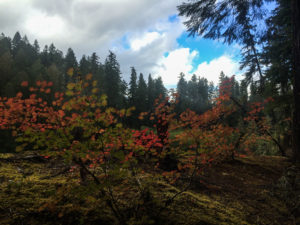
Cascade color
Today is the autumn equinox. Halfway between the light and the dark, three-quarters of this year’s spin around the sun.
The sun seems as reluctant to rise in the morning as I am. And sets again too soon. In exchange for less light, there is more color and the forest is once again vibrant with the autumn rain.
I took this photo when the trees were half red, the sky half blue. Together they made the day wholly perfect.
Like this:
Like Loading...
by aramatzne@gmail.com | 21 Sep 2017 | Musing
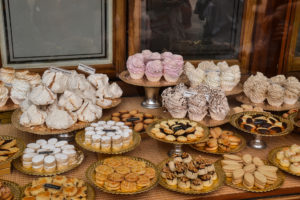
Dive through the window
I took this photo but I didn’t eat a single thing.
They must have been closed.
I can think of no other explanation.
Like this:
Like Loading...
by aramatzne@gmail.com | 20 Sep 2017 | Roads Taken
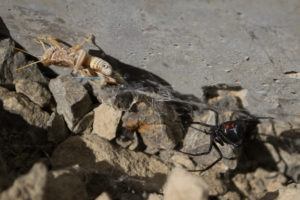
Life and death. Eeny, meeny, miny, mo, catch a grasshopper by the toe.
There are good days. There are bad days.
Some days you’re a black widow spider on top of your web. The world is at your feet, and it fears you.
Other days, you’re the grasshopper, caught by the most delicate thread and just by the toe. Yet, each time you hop away, you land in exactly the same place.
I took this photo on a day when I was perceived as the spider – though I felt like the grasshopper. Gratefully, those days are past.
Like this:
Like Loading...
by aramatzne@gmail.com | 19 Sep 2017 | Roads Taken
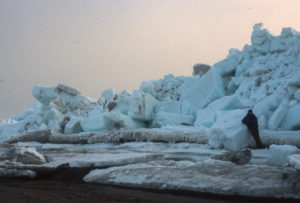
Things that happen while you sleep.
Unless the weather was completely unbearable I left the tent door partially unzipped so I could sit up and look out. My theory was if a polar bear was calling, I wanted to see it before it pounced. Of course, zipped into my sleeping bag, I looked like a puffy seal and an easy snack for a bear (granted in the photo above, out of my sleeping bag, I look like a puffy upright seal).
Sometimes while I slept people would stop on the island. They would pull up their boat, walk to the tent, see me buried in my bag, and leave again. Occasionally, I awoke to a plate of donuts or fresh fish left by unknown visitors.
When you live alone in a tent on an Arctic Ocean island you might expect heightened senses and light sleep. Hearing a boat approaching the island or a bear approaching your tent would be a good survival skill.
I took this photo after a good night’s sleep. I crawled out of the tent to find that the Arctic Ocean had moved thousands of tons of ice into this massive wall less than a hundred yards from where I slept.
It’s amazing I survived at all.
[This is a scan from the original slide. From film. Some of you may remember that stuff.]
Like this:
Like Loading...
by aramatzne@gmail.com | 18 Sep 2017 | Musing
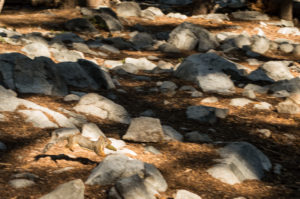
Fall caching; squirrel on the move.
This is a cautionary tale.
A chipmunk spent its morning trying to pilfer any bit of food it could find from my campsite. The food was packed, hung, and covered. There were no bits lying around, no dirty dishes, no tossed veggie scraps. The chipmunk tried every angle, checked every stuff sack and container to no avail.
Meanwhile, a squirrel spent its morning dashing through the campsite. It collected cones in trees near the lake, ran through camp with a cone in its mouth, and then into the alders along the edge of the lake’s outflow meadow. A few minutes later, having stashed the cone in some secret place, it would run back to camp, stop to look at me over my pack or across the fire ring, and then continue on its path. It didn’t disturb any of my things or even sniff at the stuff sacks. Every five minutes it made another roundtrip through camp.
After a couple of hours, the chipmunk was still angling for something easy and free, although it seemed to have less enthusiasm at this point. It stopped to scold me occasionally as if to say, “How dare you! Where is my breakfast?” It would disappear for ten or twenty minutes and then reappear to once again check every item. Just in case.
The squirrel also scolded me but it was because I inadvertently stepped into its path when it was crossing camp. Halfway through the morning, the squirrel stopped for a snack – a cone he found near one of his supply trees – and then went back to work.
Returning to my briefly unguarded teacup, I found two tiny droplets on the rock next to it. Inside the rim of the cup, there were two little, wet paw prints. The cup was otherwise undisturbed, not knocked over, no floating debris, just two perfect paw prints.
I took this photo by predicting the squirrel’s movement along the same path through camp. It was reliable, as is his winter food supply. The chipmunk only got wet feet for his morning’s work.
Like this:
Like Loading...
by aramatzne@gmail.com | 17 Sep 2017 | Musing
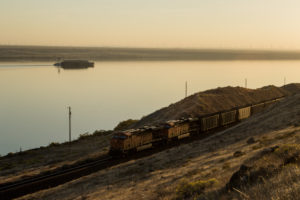
Twilight on the surface
The main stem of the Columbia River has 14 dams on it, including the largest dam in the United States. Within the entire Columbia basin, more than 400 dams generate almost half of the hydropower in the US.
Ship locks at several dams and channel dredging allow navigation from the Pacific Ocean to Lewiston, Idaho – more than 400 miles inland.
In the late 1800s, half a million salmon were caught for canning and export in one season. Today four of the 400 dams have fish ladders.
The river irrigates 670,000 acres of sagebrush desert in Washington. As many as 100 illegal dams on private property irrigate an unknown number of additional acres.
Hanford, a Cold War plutonium production site, is the most contaminated nuclear site in the US. For 27 years radioactive cooling water from the eight plutonium production reactors was released back into the Columbia River. The federal government did not disclose this information until more than a decade after the discharge ceased.
Today, an estimated 270 billion gallons of groundwater have been contaminated by high-level nuclear waste that leaked from Hanford’s storage tanks. A million-gallon plume of that radioactive groundwater is expected to hit the Columbia River within the next 10 years at the earliest and 50 years at the latest.
I took this photo in the fading evening light of a typical Columbia River day. Train tracks, carrying coal and oil trains, parallel both banks; grain and coal barges ply its waters; Interstate 84 flanks its south shore; thousands of wind turbines, just visible on the far shore, stand sentinel to the north and south; the slow, warm, slack water impounded behind another dam holds fish that can’t move downstream fast enough and can’t move upstream at all; the final ingredient in the cocktail is three decades of nuclear waste in the water and sediments. The calm water and the pastel light are a lovely façade on a tenacious, living body of water that miraculously continues to survive.
Like this:
Like Loading...










